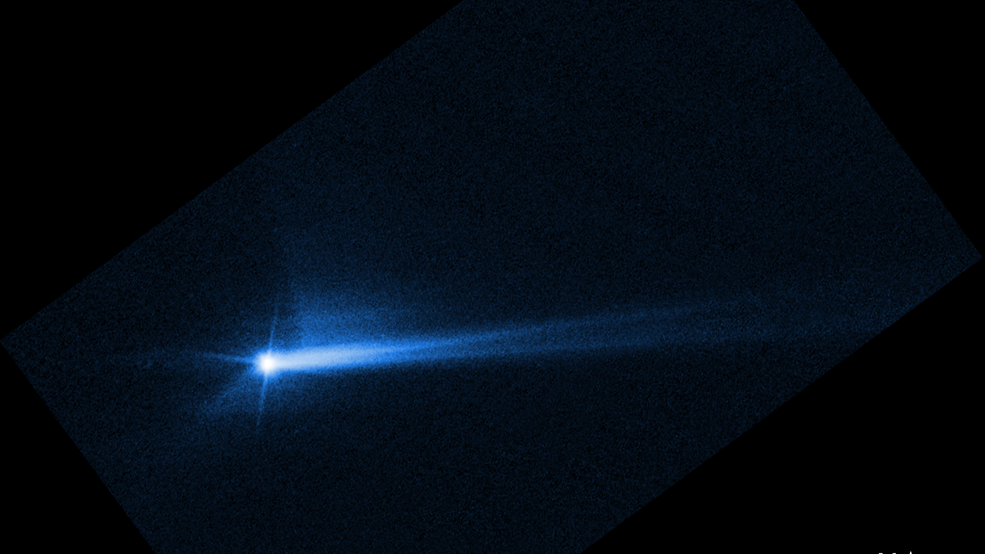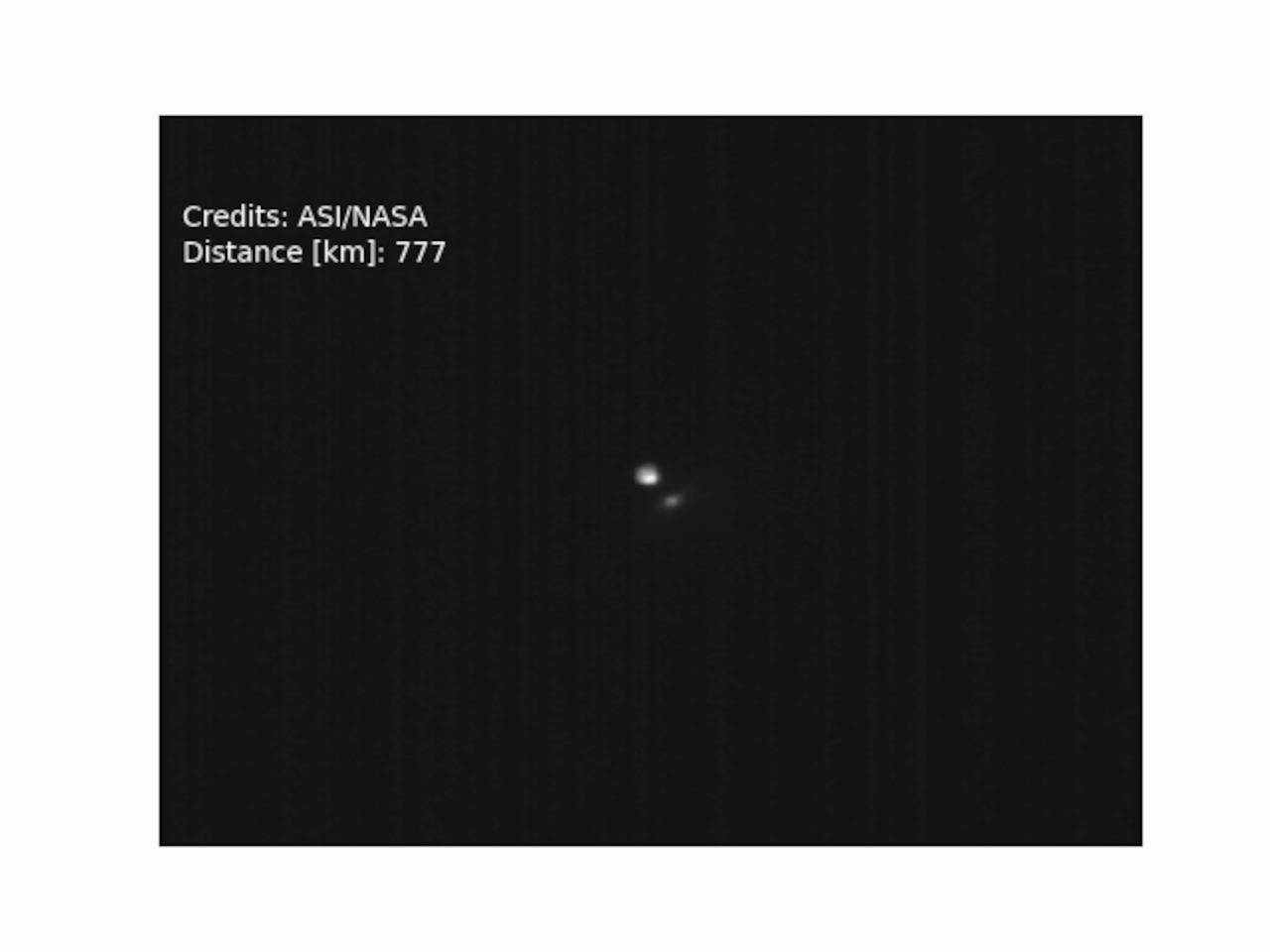Success for Dart, NASA’s first planetary defense mission

Success for NASA's Dart mission: the trajectory of the asteroid Dimorphos has changed. It represents the first test in the world for planetary defense. With this technology, the agency hopes to deflect any asteroid or comet that could pose a real threat to Earth
For the first time, humans changed the orbit of a celestial object in space.
NASA's Dart mission was successful: the trajectory of the Dimorphos asteroid changed after the impact with the Dart probe on September 26th. Dimorphos' orbit slowed by 32 minutes. This was confirmed by NASA during the press conference on the Dart mission (Double asteroid redirection test), the first planetary defense test to verify the technology needed to launch a dangerous asteroid off course from the Earth, if one were ever to be found.
Two weeks after the impact , the astronomers confirmed the measurements made with ground-based telescopes on the orbit of the asteroid hit by the probe. NASA as well as other space agencies around the world are focused on researching and monitoring potentially dangerous asteroids that could impact Earth in the future.
The Italian Space Agency (ASI) also contributed to the first planetary defense mission thanks to the LiciaCube satellite (acronym for Light Italian Cubesat for Imaging of Asteroids), which traveled with the Dart probe and resumed the experiment.
All the details.
SUCCESS FOR NASA'S DART MISSION
NASA's Dart mission succeeded in successfully modifying the trajectory of the Dimorphos asteroid, after the US space agency crashed a spacecraft into the asteroid on 26 September.
Two famous NASA telescopes, Webb and Hubble, captured the moment when the spacecraft collided with the lunar asteroid on September 26. It took days of observation to determine how much the impact altered the path of the asteroid Dimorphos around its much larger companion Didymos.
TRAJECTORY OF THE MODIFIED ASTEORIS
Before the impact with the spacecraft, Dimorphos took 11 hours and 55 minutes to orbit around Didymos: after the crash, the time was reduced to 11 hours to 23 minutes, a decrease of 32 minutes.
NASA experts in the past have stated that the mission would be considered a success if the trajectory of the asteroid could be changed by 10 minutes. "This is a very important event for planetary defense and for humanity," commented NASA administrator Bill Nelson.
CONFIRMED: Analysis of data obtained over the past 2 weeks by the #DARTMission team shows impact with Dimorphos has successfully altered the asteroid's orbit by 32 minutes – marking the 1st time humans have changed the orbit of a celestial object in space! https://t.co/MjmUAFwVSO pic.twitter.com/4Qiy1mC4gK
– NASA Asteroid Watch (@AsteroidWatch) October 11, 2022
THE IMPORTANCE OF THE DART MISSION
So the Dart mission proved more effective than expected at regulating Dimorphos' trajectory, suggesting that a deadly space rock could be deflected in the future.
"This is a planetary problem," said Lori Glaze, NASA's director of planetary science, during yesterday's press conference. "If there was an asteroid that posed a threat to Earth, we should all be worried and we all need to work together."
THE CONTRIBUTION OF LICIACUBE
The Asi LiciaCube satellite, 11 million kilometers from Earth, immediately identified the target with its two on-board cameras, immortalizing the event.
“An exceptional result that involved the 'shooting' of an object 160 meters in size at a relative speed of only 6.6 km per second. A unique company with an all-Italian know-how, the result of a collaboration between universities, companies and research centers ”explained a note from ASI.
The made in Italy satellite has produced a total of 627 images, of which we have today 326 reached Earth. Once all the images have been received, they will be the subject of scientific studies that will give us more information on the cloud created by the impact and in particular to characterize its structure and its evolution. Another important result is the collection of images of the hemispheres of the asteroids not visible in Dart, useful for defining the shape and density of celestial bodies.
MADE BY THE TORINESE ARGOTEC
LiciaCube, DARTI's travel companion, as big as a box of boots and with a mass of about 13 kilograms, is an ASI project, entirely built in the Argotec company in Turin, and is the first satellite built in our country to tackle a journey into deep space.
The LiciaCube team, all Italian, includes researchers from the Politecnico di Milano, the Universities of Bologna and Parthenope of Naples, the IFAC-CNR of Florence, coordinated by the National Institute of Astrophysics (INAF).
Here are the latest processed images from the LiciaCube satellite, with timelapse videos that portray the impact from a few seconds before to about 30 after.

THE NEXT STEPS
Finally, Dart and LiciaCube will pave the way for Hera, the European Space Agency (ESA) mission scheduled for 2024 which will have the task of performing a close flyby of the pair of asteroids, gathering key information about Dimorphos such as its mass and its internal structure, in addition to the size of the crater generated by the impact with Dart. The extra data from Hera – highlights ESA – will help transform the Dart deflection experiment into a well understood and repeatable technique that may one day really be needed.
This is a machine translation from Italian language of a post published on Start Magazine at the URL https://www.startmag.it/innovazione/successo-per-dart-la-prima-missione-di-difesa-planetaria-della-nasa/ on Wed, 12 Oct 2022 09:30:44 +0000.
